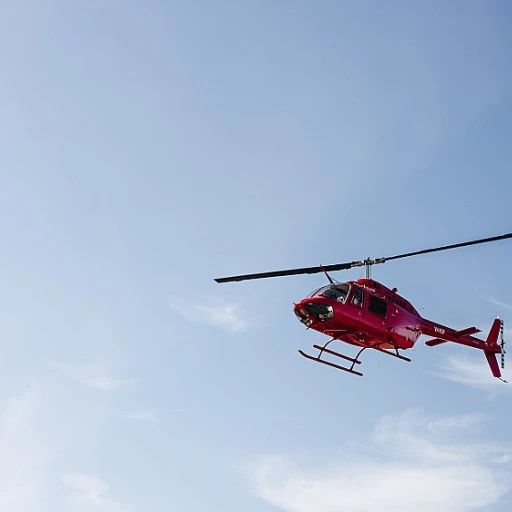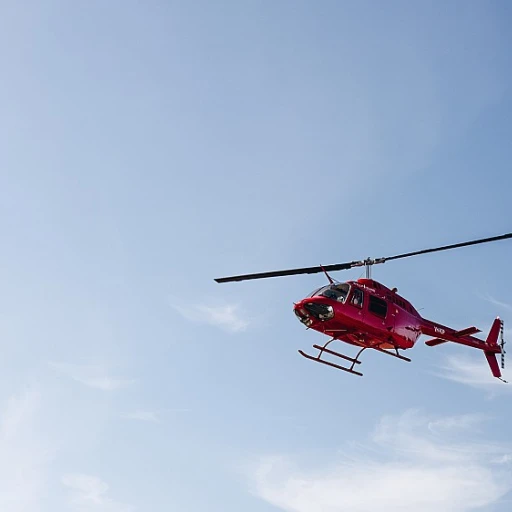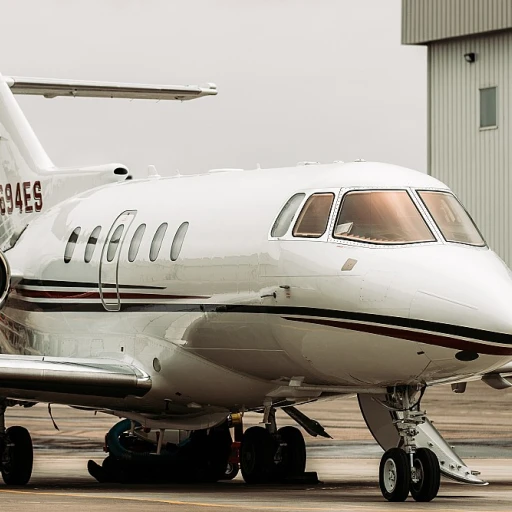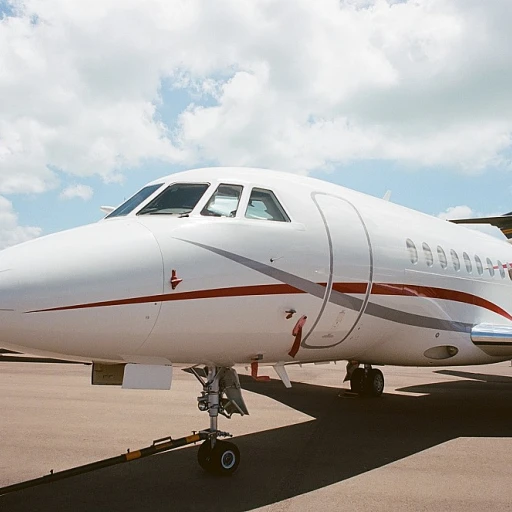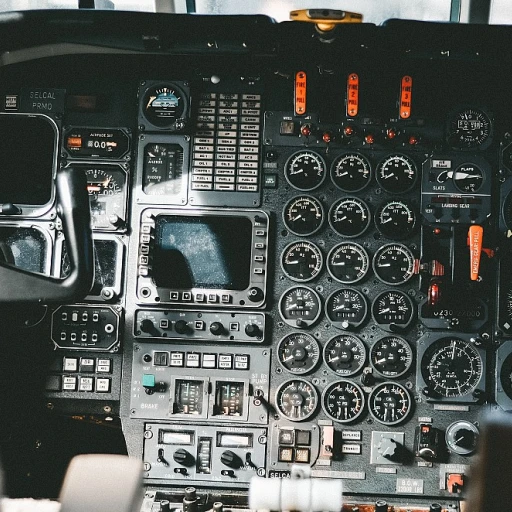Dissecting the Financials: The Cost-Benefit Analysis of Luxury Jet Leasing
Evaluating the Economics of Jet Leasing
The luxury aviation industry is teeming with investment complexities and one of the paramount decisions for an owner revolves around the financial viability of leasing a jet. Conducting a meticulous cost-benefit analysis of luxury jet leasing is essential to gauge its profitability. Statistics indicate that leasing a private jet can significantly reduce upfront expenditures, typically in the ballpark of millions of dollars, as opposed to outright purchases. It's important for luxury aviation owners to analyze leasing as a method to spread out payments and reduce the immediate financial impact, preserving capital for other investments or operational necessities.
Moreover, considering the depreciation of luxury jets, which can be quite steep in the first few years, leasing stands out as a strategy to maintain financial agility. When a jet loses up to 30% of its value in just the first few years, as noted by 'Aircraft Bluebook Price Digest,' steering clear of this depreciation via leasing can be a smart fiscal move. This tactic allows for the alignment of the costs more accurately with the usage of the asset.
The Strategic Advantages of Jet Leasing Versus Buying
One must also ponder the strategic benefits that leasing has over buying. High-end jet leasing offers aviation owners the ability to upgrade their aircraft more frequently, tapping into the latest in luxury, efficiency, and technology. Owning a jet requires a more long-term commitment to a specific aircraft, which could potentially hamper responsiveness to market trends or client preferences. Delve into asset management strategies to further understand how leasing can play a pivotal role in optimizing your aviation assets.
The jet leasing and smart contracts dynamic further introduces an innovative approach to managing these financial commitments, providing clarity and security to both lessees and lessors in the luxury aviation domain. With smart contracts in place, the terms, conditions, and compliance matters are encapsulated within a blockchain-based protocol, ensuring a seamless and transparent lease agreement.
Flexibility and Responsiveness to Market Demands
The appetite for luxury jet travel fluctuates with economic cycles. In buoyant economic conditions, demand can soar, whereas downturns can lead to a notable dip. Leasing offers the flexibility to adjust fleet size in response to these market demands without enduring the financial repercussions associated with owning a depreciating asset. It also negates the risk of holding a non-liquid asset during times when the market appetite is reduced, supporting the conclusion that jet leasing can act as a buffer against market fluctuations and should be explored further as a risk minimization strategy.
In essence, luxury jet leasing emerges as a business strategy that marries financial perspicacity with luxury aviation market demands. By considering the depreciation rates, market conditions, and the financial benefits of smart contracting, aviation owners can better strategize their path forward in this high-stakes industry. For precise figures and deeper insights, it's beneficial to crunch the numbers and examine the leasing contracts closely, ensuring all variables and potential outcomes are considered in this calculus.
Risk Minimization: How Jet Leasing Shields You from Market Fluctuations
Weathering Market Volatility with Private Jet Leasing
In the ever-dynamic landscape of luxury aviation, jet leasing emerges as a fortress against market volatility. Statistics from aviation industry analysts suggest that leasing a luxury jet can provide a stable financial platform, shielding owners from unpredictable swings in aircraft value. For instance, during economic downturns, the value of luxury assets, including private jets, can plummet. Leasing can act as a buffer during such times, eliminating the risk of capital loss. Market reports reveal that the residual values of owned aircraft can drop by 10-30% over a five-year period, a loss that leasing can circumvent.
The Security of Fixed Costs in a Fluctuating Economy
One of the most compelling arguments for jet leasing is the assurance of fixed costs. In an industry where expenses can surge without warning, chartered costs remain a predictable expense. For the high-end aviation owner, this predictability enables more accurate budgeting and financial planning. The ability to forecast and manage cash flow is invaluable, with financial experts often emphasizing the need for consistent cost structures in maintaining business stability.
Enhancing Financial Liquidity During Market Dips
Luxury aviation owners who engage in jet leasing rather than outright purchasing can maintain higher levels of liquid capital. This flexibility is critical, especially during market downturns when cash is king. By not having vast amounts of money tied up in a depreciating asset, owners can pivot and take advantage of other investment opportunities. According to recent market analysis, the liquidity afforded by jet leasing can increase an owner's investment potential by up to 20%, when compared to those with capital bound in jet ownership.
Smart Contracts: Leasing's Ally in Asset Protection
Advancements in smart contract technology are paving the way for more secure and efficient leasing agreements. Contracts that automatically execute, control, and document legally relevant events and actions according to the terms of a contract can be particularly beneficial in luxury aviation. These contracts ensure all parties adhere to agreed terms, thereby minimizing the risk associated with human error or deliberate contract breaches. According to a recent publication on smart contracts in luxury aviation management, these innovative contracts can drastically reduce the chances of costly litigations or disputes, which in turn, protects the financial interests of the leasing party.
Leasing Contracts Deconstructed: Navigating Through the Fine Print
Navigating Through the Fine Print of Luxury Jet Leasing Contracts
In the intricate world of luxury aviation, mastering the art of jet leasing requires a deep dive into contractual details, ensuring owners make informed decisions that align with their financial and operational objectives. It is reported that over 30% of private jets in North America are leased rather than owned outright, suggesting that many high-end aviation owners see leasing as a financially astute strategy. To reap the potential benefits of jet leasing, it is critical to understand every clause and condition enshrined in the jet leasing contracts.
Key Clauses to Scrutinize in Your Jet Leasing Agreement
- Maintenance Responsibilities: Clearly defined maintenance obligations safeguard the leaser and lessee from unexpected costs, often splitting the responsibilities between routine maintenance (lessee) and major repairs (leaser).
- Hourly Flight Minimums: Some contracts stipulate a minimum number of flight hours to maintain cost-effectiveness for the leaser, crucial data when analyzing potential overheads.
- Lease Term and Renewal Options: Understanding lease duration and renewal conditions ensures strategic long-term asset management and alignment with your luxury aviation goals.
- Early Termination Penalties: Should market conditions shift, it's essential to know the costs associated with premature contract exit — a statistic vital for dynamic financial planning.
Understanding Maintenance Reserve Accounts and Escrow Services
Accurately forecasting aircraft maintenance costs stands as a cornerstone of successful jet leasing, a central factor when considering that engine overhauls alone can run into the millions of dollars. Maintenance reserve accounts are common practice, where lessees contribute to a fund covering significant repair work over time. This fund acts not only as financial foresight but also provides a transparent record of aircraft condition throughout the lease. Moreover, employing escrow services for such transactions ensures an impartial mediator secures the funds, further protecting your fiscal interests in luxury aviation leasing maneuvers.
Deciphering Tax Implications and Liability Stipulations
An understanding of the tax environment, as it pertains to luxury jet leasing, can significantly impact your return on investment. Approximately 50% of business aircraft operators are not fully aware of the tax benefits and implications that accompany leasing arrangements. A savvy aviation owner must parse out tax obligations and potential incentives, as well as ensuring robust liability coverage. Legal expertise, sometimes mandated by law, can be invaluable when delineating your liability, especially considering that litigation costs in the aviation sector can escalate quickly without clear contractual boundaries.
Optimizing Your Assets: Strategic Asset Management with Leasing
Maximizing Returns: Asset Management in Luxury Jet Leasing
Understanding the intricacies of asset management within the luxury jet leasing arena is paramount for high-end aviation owners. It's all about maximizing the utility of your investment while ensuring that the jet's value remains robust over time. According to industry statistics, the luxury aviation market is expected to climb, with private jet flights increasing by as much as 10% year-on-year. To capitalize on this momentum, strategic asset management is a must.
Balancing Usage and Maintenance: Scheduling for Peak Performance
To ensure that your luxury jet retains its allure and operates at peak performance, a meticulous balance between usage and maintenance is crucial. The keyword here is 'scheduled maintenance,' as opposed to reactive repairs. It is reported that well-maintained jets can have a significantly longer lifespan and better preserve their resale value. For instance, a luxury jet that is serviced regularly can outlast one that isn't by several thousand flight hours, emphasizing the importance of a well-planned maintenance schedule.
Enhancing Jet Availability: Revenue Through Charter Services
An emerging trend is the rise of revenue opportunities through charter services. By making your luxury jet available for charter when you're not using it, you can create a lucrative revenue stream. In fact, the charter market size was valued at over USD 25 billion in recent years, hinting at the potential for supplemental income. However, balancing personal use with charter services should be done skillfully to avoid excessive wear and tear that might devalue the asset.
Adaptive Reconfiguration: Catering to Market Demands
The luxury aviation market's demands are ever-changing. Owners should consider periodic cabin reconfigurations based on current trends and client preferences, as this can have a notable impact on the jet's charter appeal and resale value. Statistics reveal that jets with modernized interiors and cutting-edge technology can fetch premium charter rates and have a higher market value—a compelling reason to invest in regular upgrades.
Ensuring Compliance: Regulatory Adherence as a Cornerstone
Regulatory adherence is not merely a legal requirement; it's a cornerstone of asset management. With aviation regulations continually evolving, non-compliance can result in significant fines. For instance, a single infraction in airspace regulation can cost thousands of dollars—avoidable expenses for vigilant owners. More importantly, compliance can influence the resale value of the aircraft, with compliant jets being more attractive to potential buyers or lessees.
Valuation Vigilance: Monitoring Market Trends
Lastly, maintaining a keen eye on market trends is essential for strategic asset management. Not only does this involve understanding current valuations, which can fluctuate with economic changes, but also forecasting potential shifts in demand for specific jet models. For example, an increase in international travel could boost the demand for long-range jets, affecting their market valuation positively.
By integrating these strategies into your luxury jet leasing arrangements, you can optimize your asset for both performance and profitability, ensuring a prestigious position in the competitive landscape of luxury aviation. Having a deep analytical grasp of the aforementioned factors will not only distinguish your offerings but also secure your financial aspirations in the world of high-end aviation.



